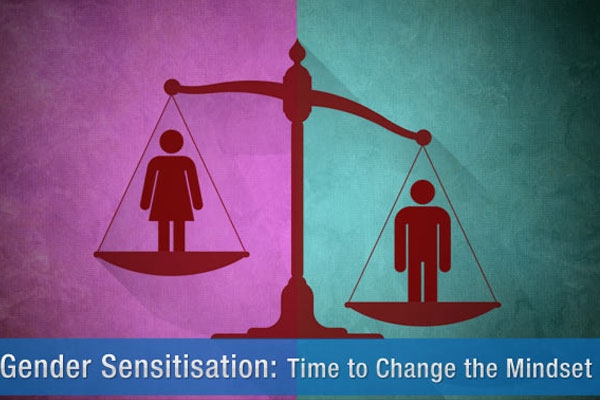
(Image source from: mapsofindia.com)
It might not be possible to abolish the entire system of domestic slavery towards women in a day. As we say, Rome was not built in a day. Nevertheless, there are minor steps that we can take to show our gratitude and gratefulness towards domestic helpers.
We can start by helping out with various chores, doing and taking up our own responsibilities. Employers and governments should mark International Women Day by pledging to improve the lot of women workers, increase their visibility, and protect their right to organize. The following steps will help decrease the slavery they undergo and possibly, the emotional stress and trauma and help create aw“I am the one who notices the house is running out of toilet paper.”
The population of the planet earth is almost now reaching to 5 billion. This is said by the 3 billion mothers across the world who work all day and night to ensure the sustainability, comfort and healthy living of our families. Being a mother is not just a role, but multiple responsibilities put together to bring happiness, safety and warmth to any individual.
What will this article convey?
Mothers through out the world who work as housewives are often used to the term or the social phrase, “I don’t work I am a housewife.” However, this statement is not true at all. Why? Just because some mothers do not physically go out and do a job does not mean they are not part-taking in any form of labour. The difference between a working individual and a house maker is simple. A working individual works for earning money and committing to a job while a mother works to support her family emotionally and physically which is just as important. There is no end to tidying the house or doing errands or chores at home. Like much of the feminized work done more often by women than men, thinking, worrying, paying attention, and delegating is work that is largely invisible while working at home and gets almost no recognition.
House work can be stressful and tenuous. Not only must the mother or in fact the care taker at home whether it is a man or a woman but they have numerous tasks to look after to ensure that they are their maintain the well being of the ones they are looking after. Their work does not restrict to only doing household chores. They also focus on keeping the house neat and tidy but the bills, children, their education, their needs, food, health, extra activities.
There just seems to be no break. This an have various effects on the caretaker. Stress, high blood pressure levels, no control over anger or lack of anger management or sometimes even depression.
WHAT IS DOMESTIC WORK?
Housekeeping refers to the management of duties and chores involved in the running of a household, such as cleaning, cooking, home maintenance, shopping, laundry and bill pay. These specific tasks are either pertained to the mother who is a home-maker or anyone responsible for ensuring or taking care of the individuals at home.
Domestic generally means relating to someone's family, home, or home country and domestic work means someone who works at home, doing chores and part-taking in homely activities.
Domestic labour is a concept developed within feminist theory to analyze the significance of the unpaid work performed by women in the home. Domestic labour is sometimes referred to as ‘reproductive labour’, after distinction between productive (value-creating)
work and work for re-creating the worker or the amount of work at which they have to cater to.
When speaking about domestic work, most of the motioned ideologies claim women to be the home-makers while men work out on the field. They also equate domestic work with “emotional work” undermining the amount of time, stress and energy women put into dedicating their lives for the better of their homes. During the 70’s, men believed that women were incapable of doing labor built due to their stunted intellectual capabilities which made men confine women to homes while they would work for wages.
Despite disagreement as to how precisely to conceptualize such labour, and about its substantive significance, it is widely recognized as providing an important basis for inequality between the sexes, forcing a degree of exploitation by men. Women were sent to do activities which were “up to their capacity” such as working in others homes, prostitution, cooking, cleaning etc. This not only physically drains women or energy but also emotionally stunts the from believing that they could do any better. The International Labour Organization estimates that domestic work is one of the most common forms of employment for women – 1 in every 13 female wage earners globally
 (Image source from: wikimedia.org)
(Image source from: wikimedia.org)
Statistics show that it is more difficult for women to balance between work and house hold work in India. However, when shown a comparison between men and women on balancing of working hours, there is not much of a different (32-41). Although the statistics are self explanatory, this number caters to the whole world and not just women or home care takers in India. However, women are confined to taking care of their homes more than men are. Women and men should be equally able to balance their life between taking care of their homes, family and children with maintenance the house and earning income to support the family. Both the genders must be willing to take up the responsibility.
However for a woman to manage a household with a non working husband and manage makes it more difficult for the woman.
What have we learned from this?
Scholars had already documented that women, even those who worked full time, were doing the majority of what came to be called the “second shift”: the work that greets us when we come home from work.
Caretakers at home deteriorate their health by stressing themselves to work too much.Excluding India, when we take other parts of the world into consideration, the domestic elopement percentage is low by those we are not well of. In other words, in other countries regardless of status or how much money one earns, domestic help is done by all. You can be a college student studying at Harvard university and still work as a domestic helper in peoples houses to earn wages, regardless of your gender. In fact, in foreign countries, domestic help is expensive to hire as well. Everyone regardless of their job is treated with respect. The concept of inequality when it comes to occupation does not exist.
Another misconception is domestic workers devalue the work they do, This is not true. People other than domestic workers devalue their job. The whole concept of me before you or I am better than you must be demolished.
It becomes invisible when women perform household tasks as a paid occupation.While work in garment factories may not be “hidden behind closed doors” in the same way as work in private homes, the lack of transparency in supply chains of many international brands effectively leaves women workers invisible to consumers and labour watchdogs. Since very few international clothing brands disclose the names and locations of their suppliers, your latest clothing purchase could easily have been produced in exploitative conditions.
Some problems seem intractable and cannot be found so easily and wither away in our day to day lives. But once a problem is identified, as a responsible citizen, it is our duty to help as much as we can, big or small. There are clear and practical steps that governments and employers – whether large corporations or private households – can take to improve women rights in the workplaceareness to other to help treat women for the better. These steps can help the millions of women who keep households and factories running – and their families – to live better lives.
By Meena Atmakuri








